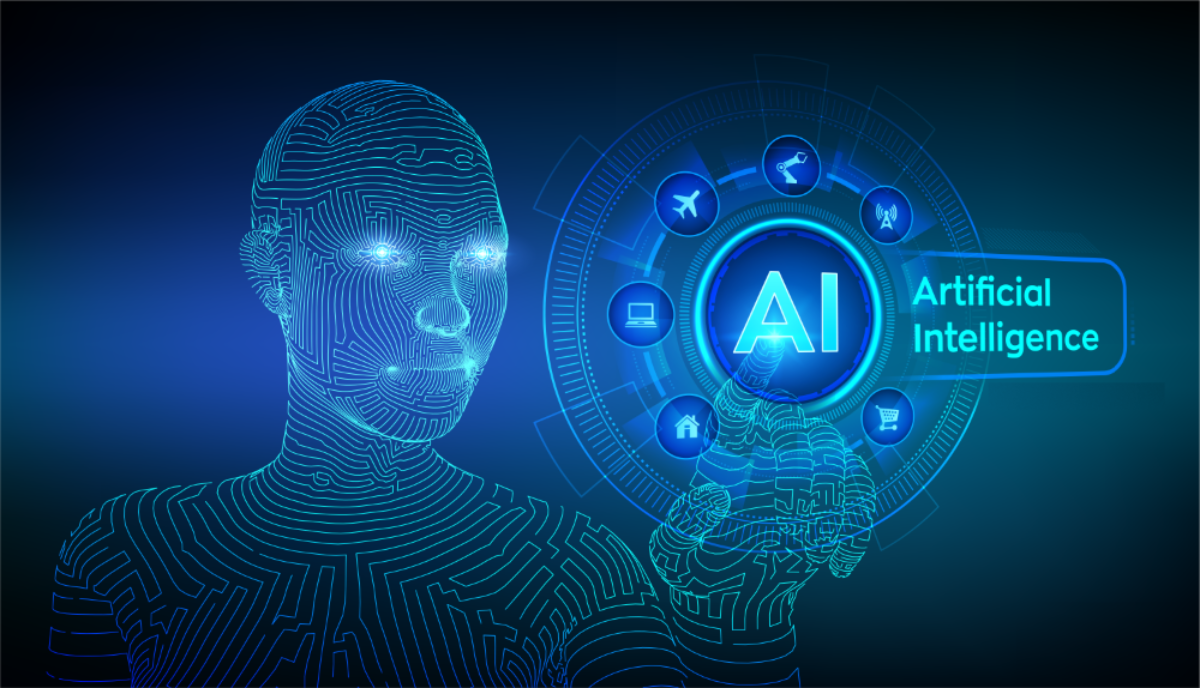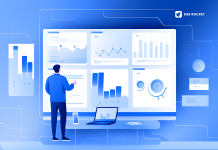For some decades now, artificial intelligence (AI) has been a business buzzword. Organizations of all shapes and sizes have expressed a keen interest in the field, but many have seemed unsure how to adopt and implement this still-evolving technology. However, recent years have seen significant steps forward in the accessibility and practical utility of artificial intelligence. AI is increasingly being leveraged for tasks that could previously only be done by humans, such as providing effective real-time customer support in the form of chatbots. At the same time, AI can be used to do things that would be essentially impossible without it, such as sifting through and making sense of the vast amounts of information and massive datasets generally referred to as big data.
Data science and AI often come together and can be used very successfully in and alongside areas like business intelligence (BI). Business intelligence involves leveraging multiple data sources to make smarter and more informed business decisions. AI applications can also be used to analyze data, but rather than just informing decisions, it can also go ahead and implement them. An example might be a banking BI solution that incorporates AI so that it not only can identify patterns predicting fraudulent activity but also take steps to reduce their occurrence. Visit Marymount University to learn more about how to incorporate an effective AI strategy in business intelligence. Online courses are increasingly providing effective routes into these fast-evolving fields. Taking an online Doctorate of Business Administration (DBA) focusing on Business Intelligence is a great way to learn everything you need about the subject.
What is artificial intelligence?
Before taking a deep delve into the role of AI in business both now and in the future, it’s essential to have at least a basic understanding of artificial intelligence. A basic definition is that AI is intelligence displayed by machines rather than the natural intelligence of humans and animals. There’s still plenty of scientific and philosophical debate about what constitutes ‘intelligence’ in humans; the question is considerably complex.
Artificial intelligence has long been the subject of science fiction, but the first significant steps towards making it a science fact began in the middle of the last century. Fresh from cracking the Nazi encryption machine, the Enigma, and having a considerable impact on the course of the Second World War, mathematician Alan Turing turned his thoughts to machines’ ability to think with his seminal 1950 paper ‘Computing Machinery and Intelligence.’ It established the fundamental goal and vision of artificial intelligence. Even today, the Turing Test stands as a benchmark for whether a machine or program can think and act like a human.
In the first decades of the 21st Century, we have made great strides in developing AIs that can excel in all sorts of tasks. Unlike human intelligence, though, these AIs tend not to be fully adaptive. An AI that can beat a human grandmaster at chess (or the even more complex Chinese game Go) will not necessarily be able to sift through mountains of data to look for early warning signs of cancer or pilot a driverless car. Humans indeed need to learn, train or practice new skills, but they don’t have to be redesigned from the ground up, as is often the case with AI. This is known as ‘Narrow AI’ and is the type we are currently working with. Typically, machine learning algorithms are trained with large datasets to enable them to carry out a particular task correctly.
‘General AI’ is a more flexible type of machine intelligence, which can more easily learn to carry out vastly different tasks. Plenty of research is being undertaken in areas like artificial neural networks, which essentially try to replicate how the human brain functions. True General AI does not yet exist outside the realms of sci-fi, but many experts believe it will happen in the not-too-distant future.
That isn’t to say that Narrow AI is not already valuable in many different sectors. A lot has been made of AI’s success in playing games, including the chess and Go mentioned above and video games like the popular StarCraft II. These milestones are important because they help demonstrate AI’s potential for strategies that can outperform even the best human player. Beyond games, AI is already being used across businesses of all types for tasks and purposes, including…
Customer relationship management (CRM)
Customer relationship management (CRM) concerns how businesses interact with their customers and can include areas such as improving customer experience, service, and support. One increasingly common use for AI in this area is customer-facing support like chatbots and voice bots. They tend to use machine learning algorithms and a technique known as natural language processing (NLP). The aim is to provide fast and accurate information in a natural and ‘human-like’ way. When done well, leveraging technology in this area can provide valuable support to more people at a cheaper cost.
AI can also collect and analyze customer data to make personalized offers and tailor the customer experience. It can also minimize the human effort needed to keep CRM platforms like Salesforce and Zoho accurate and up to date. You can use AI to transform a regular CRM system into a self-updating, auto-correcting platform that keeps on top of customer relationship issues with minimal human intervention.
Targeted marketing
A specific part of that enhanced customer experience is targeted marketing of various kinds. Amazon’s suggested purchases and recommendations are an example that we’ve all become familiar with and has since been emulated many times. Intelligent systems use purchase and browsing history, amongst other data, to present relevant suggestions. Online ads are also targeted, placed by algorithms where they are predicted to be most effective and designed to optimize click-through rates. Targeted emails and other messaging can also be effectively managed by AI.
Cybersecurity
Cybersecurity has become an arms race between cyber-criminals and malicious actors on one side and security teams on the other, and both sides are increasingly using AI. Organizations of all sizes may lack cybersecurity experts due to cost and the sheer scale of the task, and AI systems can add a crucial extra layer of defense. AI systems can monitor networks in unique ways, such as by monitoring and analyzing patterns from data input. On detecting a threat, it can track through all the data to find the source, adding to its knowledge and guarding against future threats.
Accounting and payroll
Automation is increasingly used in many business areas, including accounting, but this is not the same as AI. Automation follows pre-programmed rules and can be especially useful for carrying out repetitive tasks without the need for human intervention but also without the capacity for human error. However, automation is not so good at reacting or adapting, which is where AI comes in. Artificial intelligence can direct all the repetitive humdrum tasks that a regular automated system can, but can also analyze data, learn from failures and solve issues strategically in complex areas like payroll.
Recruitment and human resources
Perhaps ironically, AI is beginning to play a significant role in human resources. Many companies and organizations now use AI to help in the recruitment process. It has typically been used to screen unsuitable applicants for positions that attract a high volume of applications. AI can detect more nuance in applications and resumes than a tick-box system that only looks for simple yes/no factors like, ‘Do they have a degree?’ HR managers can work with AI to analyze candidates’ experience and skills to match them with the right roles.
Smart supply chains
Supply chain pressures have received a lot of attention recently, and there’s been a certain amount of rethinking about lean supply chains. That doesn’t mean that supply chains cannot be optimized, though, just that there needs to be enough flexibility and capacity to deal with these pressures. AI is ideally placed for operating agile supply chains, avoiding waste but ensuring that the chain doesn’t break down when stresses or bottlenecks appear.
AI for industry-specific tasks
AI is also being used for specialist tasks in several different sectors, including:
Healthcare: AI is being-leveraged in several areas of healthcare and medical research. The ability of machine learning systems to sift through vast datasets, for example, has led to algorithms that can help human clinicians spot and diagnose cancers and other conditions.
Finance: Financial institutions increasingly use AI for fraud detection and security, analyzing large amounts of historical and real-time data to flag suspicious transactions. Other uses for AI in fintech include loan approvals and wealth management.
Transport: AI is a vital part of autonomous vehicle technology but is also used in several other areas, including traffic management decisions and transport logistics. As the Internet of Things grows, we are also heading for smart cities, where vehicles and infrastructure can communicate and interact.
The future of AI in business
As we have seen, AI is already being put to multiple uses in businesses of all kinds. It’s more commonly used in some sectors than others, but there is still plenty of room for expansion. According to the IBM Global AI Adoption Index for 2022, the global AI adoption rate currently stands at 35%. That means two-thirds of organizations worldwide are yet to employ AI, and there’s no doubt that the take-up will continue. A further 42% of businesses in the survey – which looked at more than 8,500 businesses in territories including the US, China, India, Australia, Latin America, and Europe – said they were exploring AI and intending to implement it soon. Two-thirds (66%) of companies are already using or planning to use AI to help them reach sustainability goals. Other benefits cited include cost savings and efficiencies, improvements in IT or network performance, and better experiences for customers.
Barriers to increasing AI adoption do remain, though. The top reasons given by organizations barring the successful implementation of artificial intelligence include limited skills, knowledge, or expertise in AI (cited by just over a third or 34% of companies), cost (29%), a lack of tools or platforms to develop models (25%), projects being too complex or difficult to integrate and scale (24%), and
too much data complexity (24%).
The report also found that most businesses employing AI still needed to take steps to ensure the trustworthiness of their AI systems, including addressing bias, tracking variations in performance, and the ability to explain AI-driven decisions adequately. It seems likely that many of these issues and barriers will be addressed and overcome as the technology continues to improve and mature. It also seems inevitable that more and more organizations will take the plunge into adoption as the benefits become impossible to ignore and competitors take an AI-powered edge.
It’s impossible to foresee every way that AI will evolve in the future and the possibilities it will enable. Driverless cars have been predicted for decades, but only recent improvements in AI (along with other technologies like LIDAR and advanced sensing systems) have started to make them a reality. As we get closer to General AI, systems will also become more versatile and able to take on different tasks rather than sticking to narrow specializations. Whatever happens in the future, artificial intelligence looks like playing a large part.












